1. National Cancer Information Center. Cancer incidence [Internet]. Goyang: National Cancer Information Center;c2012 [cited 2012 Dec 28]. Available from:
http://www.cancer.go.kr.
2. World Health Organization (WHO) Databank. WHO statistical information system [Internet]. Geneva: World Health Organization;c2013 [cited 2013 Feb 5]. Available from:
http://www.who.int/whosis.
3. Statistics Korea. Cancer mortality [Internet]. Daejeon: Korea National Statistical Office;c2011 [cited 2011 Sep 8]. Available from:
http://kostat.go.kr.
4. Maskarinec G, Noh JJ. The effect of migration on cancer incidence among Japanese in Hawaii. Ethn Dis. 2004; 14:431–9.
5. Siegel R, Naishadham D, Jemal A. Cancer statistics, 2012. CA Cancer J Clin. 2012; 62:10–29.

6. Borders TF, Booth BM. Rural, suburban, and urban variations in alcohol consumption in the United States: findings from the National Epidemiologic Survey on Alcohol and Related Conditions. J Rural Health. 2007; 23:314–21.

7. Volzke H, Neuhauser H, Moebus S, Baumert J, Berger K, Stang A, et al. Urban-rural disparities in smoking behaviour in Germany. BMC Public Health. 2006; 6:146.

8. Fournel I, Cottet V, Binquet C, Jooste V, Faivre J, Bouvier AM, et al. Rural-urban differences in the long-term risk of colorectal cancer after adenoma removal: a population-based study. Dig Liver Dis. 2014; 46:376–82.

9. Gao J, Xie L, Chen WQ, Zhang SW, Wu QJ, Yang Y, et al. Rural-urban, sex variations, and time trend of primary liver cancer incidence in China, 1988-2005. Eur J Cancer Prev. 2013; 22:448–54.

10. Wang Z, Goodman M, Saba N, El-Rayes BF. Incidence and prognosis of gastroesophageal cancer in rural, urban, and metropolitan areas of the United States. Cancer. 2013; 119:4020–7.

11. Jung KW, Won YJ, Kong HJ, Oh CM, Lee DH, Lee JS. Cancer statistics in Korea: incidence, mortality, survival, and prevalence in 2011. Cancer Res Treat. 2014; 46:109–23.

12. Fritz A, Percy C, Jack A, Shanmugaratnam K, Sobin L, Parkin DM, et al. International classification of diseases for oncology. 3rd ed. Geneva: World Health Organization;2000.
13. Ahn HS, Kim HJ, Welch HG. Korea's thyroid-cancer "epidemic": screening and overdiagnosis. N Engl J Med. 2014; 371:1765–7.
14. Rose J, Wertheim BC, Guerrero MA. Regional differences in thyroid cancer presentation and survival: a SEER study. Endocr Pract. 2013; 19:998–1006.

15. Piazuelo MB, Correa P. Gastric cancer: overview. Colomb Med (Cali). 2013; 44:192–201.
16. Wang XQ, Terry PD, Yan H. Review of salt consumption and stomach cancer risk: epidemiological and biological evidence. World J Gastroenterol. 2009; 15:2204–13.

17. D'Elia L, Rossi G, Ippolito R, Cappuccio FP, Strazzullo P. Habitual salt intake and risk of gastric cancer: a meta-analysis of prospective studies. Clin Nutr. 2012; 31:489–98.
18. Shikata K, Kiyohara Y, Kubo M, Yonemoto K, Ninomiya T, Shirota T, et al. A prospective study of dietary salt intake and gastric cancer incidence in a defined Japanese population: the Hisayama study. Int J Cancer. 2006; 119:196–201.

19. La Vecchia C, Negri E, D'Avanzo B, Franceschi S. Electric refrigerator use and gastric cancer risk. Br J Cancer. 1990; 62:136–7.

20. Winkels RM, Heine-Broring RC, van Zutphen M, van Harten-Gerritsen S, Kok DE, van Duijnhoven FJ, et al. The COLON study: colorectal cancer: longitudinal, observational study on nutritional and lifestyle factors that may influence colorectal tumour recurrence, survival and quality of life. BMC Cancer. 2014; 14:374.

21. Haenszel W, Kurihara M. Studies of Japanese migrants. I. Mortality from cancer and other diseases among Japanese in the United States. J Natl Cancer Inst. 1968; 40:43–68.
22. Rybojad P, Dluski D, Rybojad B, Kedra M, Sawicki M, Skoczylas P, et al. Urban vs. rural patients. Differences in stage and overall survival among patients treated surgically for lung cancer. Ann Agric Environ Med. 2013; 20:101–5.
23. Schwartz DA. Helminths in the induction of cancer: Opisthorchis viverrini, Clonorchis sinensis and cholangiocarcinoma. Trop Geogr Med. 1980; 32:95–100.
24. Kim C, Kim HG, June KJ, Kim SY. The effects of case management for clients with clonorchiasis in riverside areas. J Korean Acad Community Health Nurs. 2012; 23:427–37.





 PDF
PDF Citation
Citation Print
Print


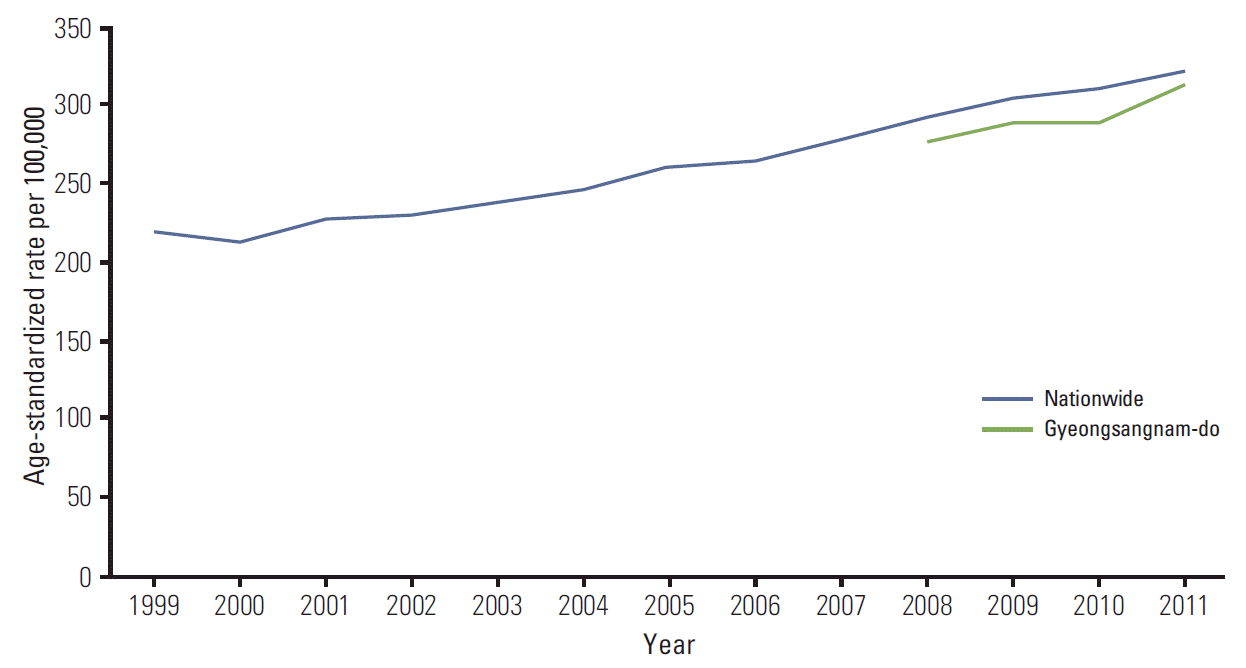
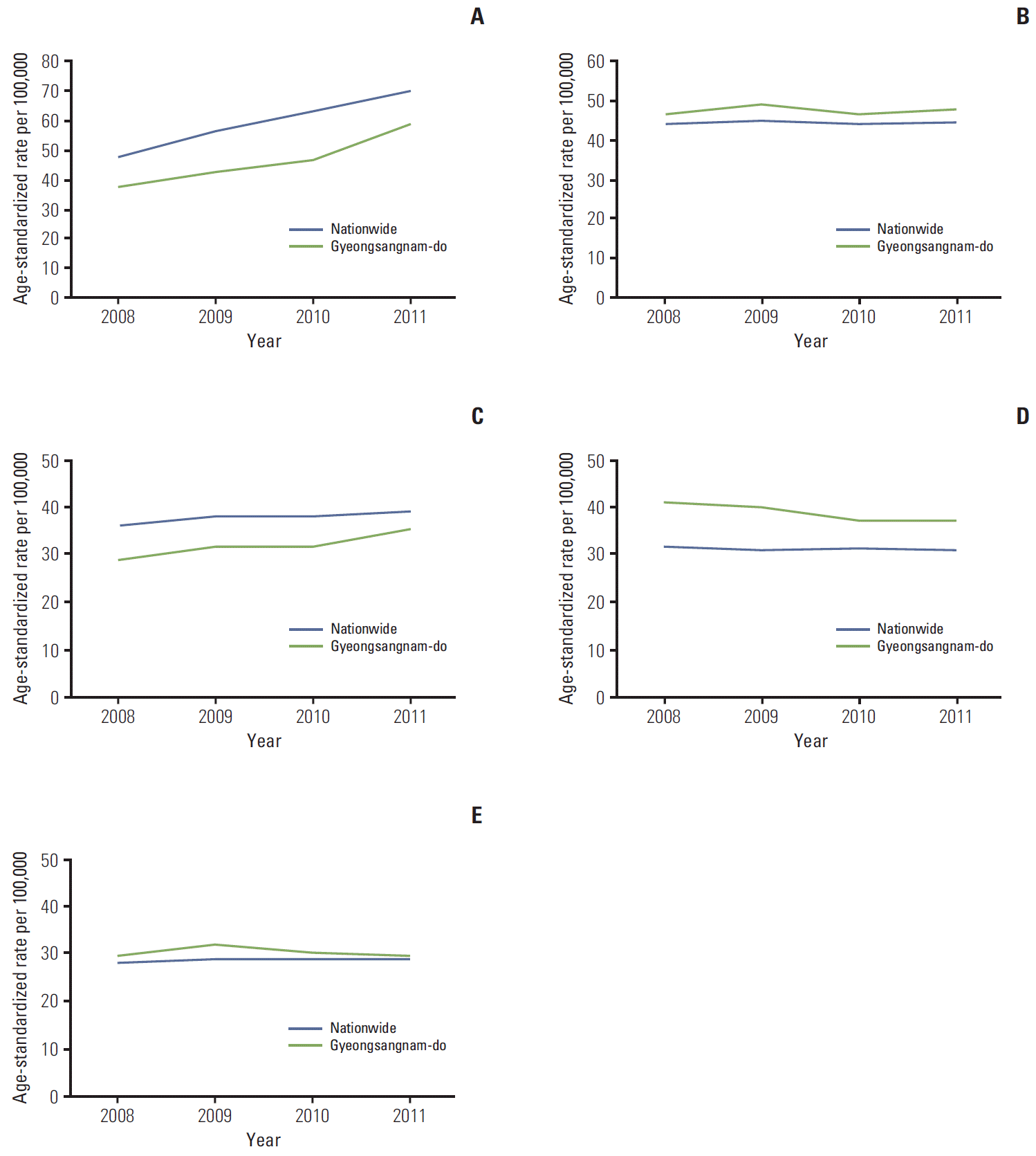
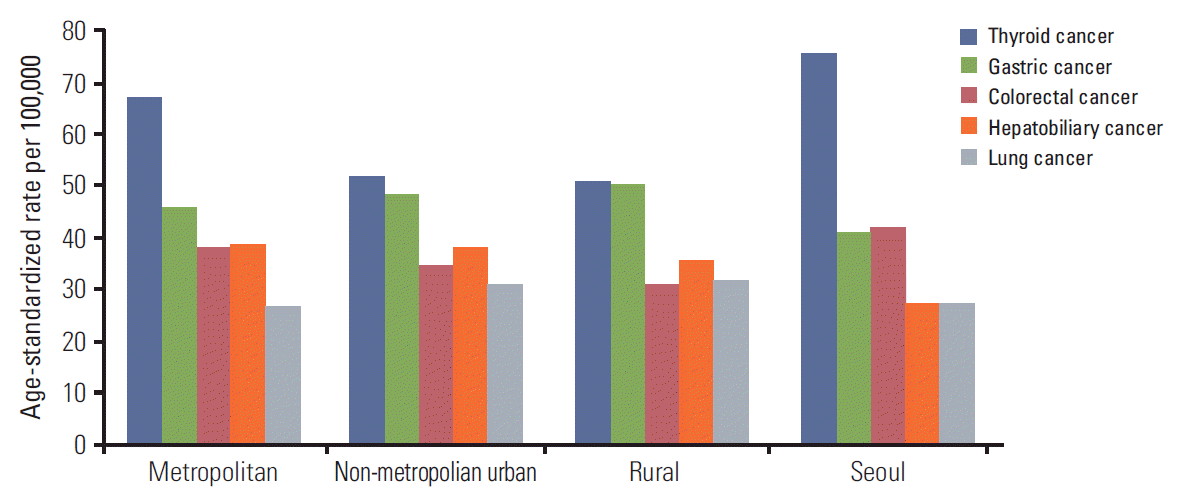
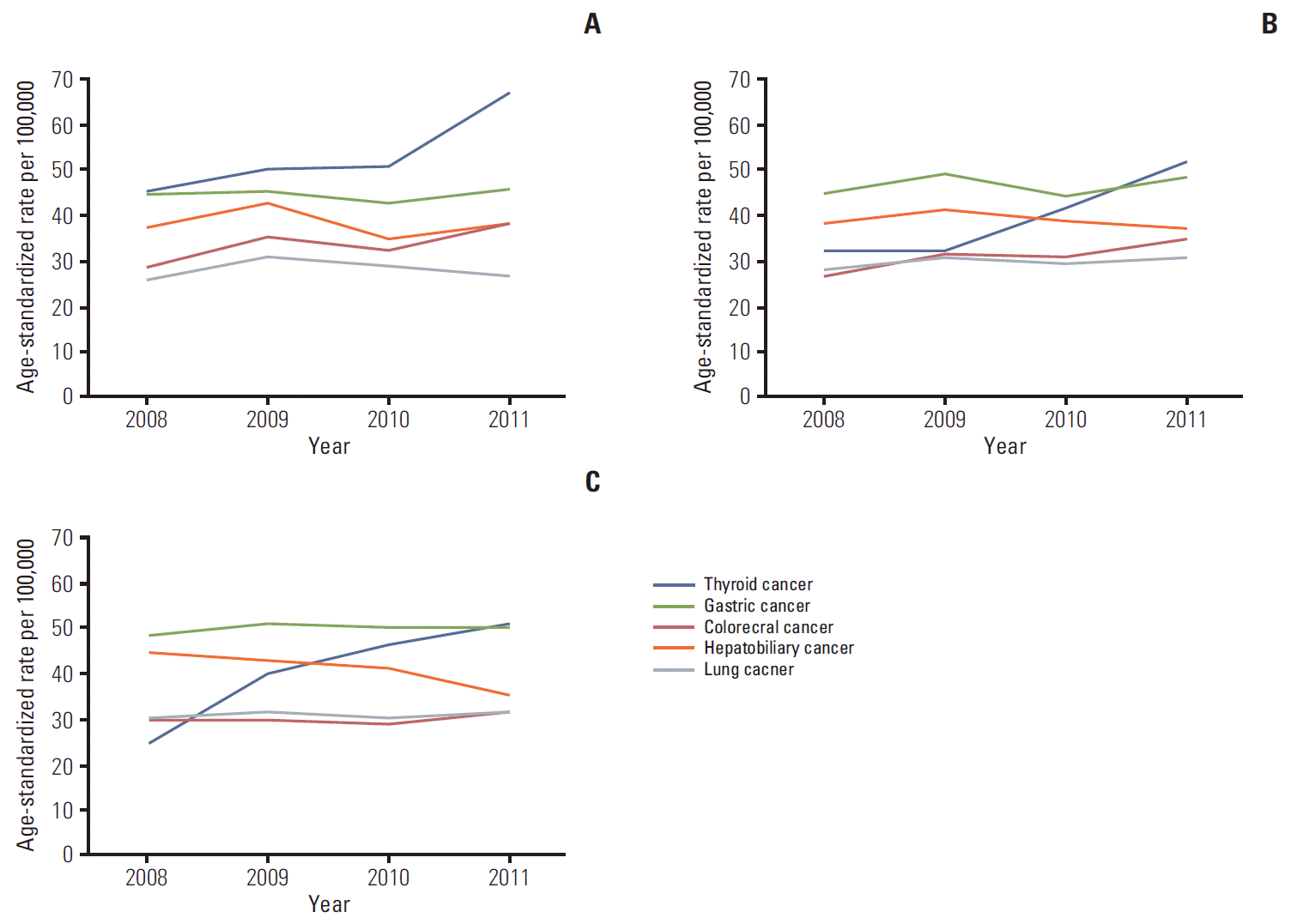
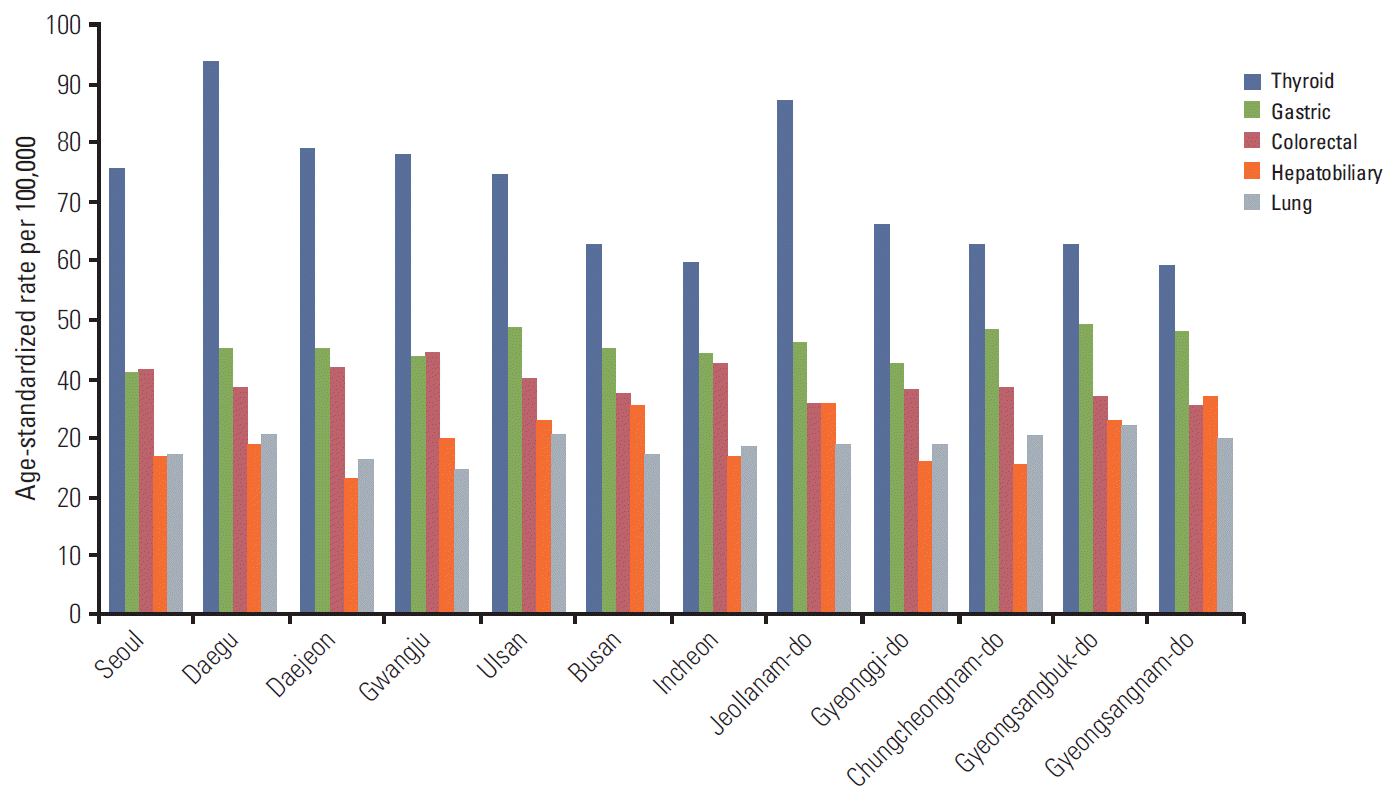
 XML Download
XML Download